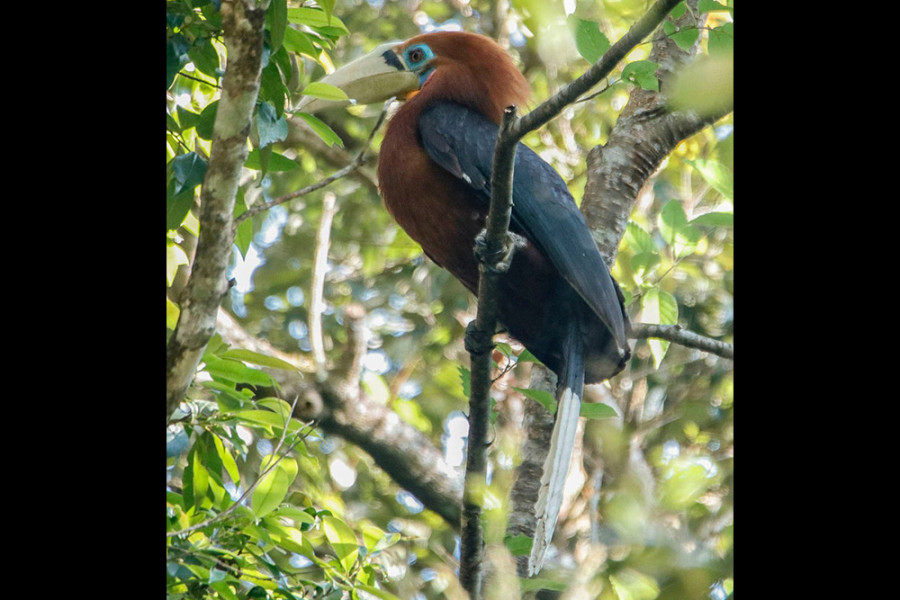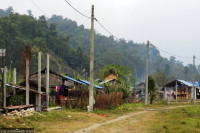National
Nepal’s list of threatened birds is growing
19 bird species were added to the list of nationally threatened birds in the past decade.
Pradeep Menyangbo
The number of bird species on the nationally threatened list has been rising with every bird count conducted at intervals in the past two decades, bird conservationists say.
The uptick in the number of bird species on the threatened list is an indication of more bird species nearing extinction.
According to ornithologists, 19 birds were added to the list of nationally threatened birds in the country in the past decade.
“A bird count in 2011 conducted by various national and international organisations put a total of 149 bird species on the threatened list in Nepal,” said Hemsagar Baral, a senior ornithologist and coordinator of the ongoing aquatic bird census. “The number increased to 168 in 2017,” he said.
The number of nationally threatened bird species was 133 and 129 in 2004 and 1996 respectively.
“The gradual rise in the number of threatened bird species means several bird species are on the brink of extinction in the country. There are 43 threatened bird species in the world. But Nepal has 168 nationally threatened bird species,” said Baral.
According to Baral, 49 of 168 threatened bird species are aquatic. The nationwide count of aquatic birds kicked off on January 1 and will continue till January 16.
“The fresh count will show the latest condition of the threatened bird species in the country,” said Baral.
Baral informed that Bhudiphor (Lesser adjutant), Raj Dhanesh (Great Hornbill), Gomayu Mahachil (Steppe eagle), Seto Gidda (Egyptian vulture), Dangar Gidda (White-rumped vulture), Sun Gidda (Red-headed vulture), Khar Mayur (Bengal florican) among other birds are on the verge of extinction in the country.
Conservationists and nature guides say even indigenous bird numbers in Nepal are declining. “Some of the indigenous bird species are also close to extinction. The list of the threatened bird species getting longer indicates various challenges in bird conservation in the country,” said Anish Timsina, a nature guide and a former chairman of the Koshi Bird Society.
According to Timsina, shrinking forest cover and wetlands, habitat destruction, chemical poisoning, land fragmentation, climate change, lack of awareness, and hunting among others are the main challenges to bird conservation in Nepal.
Including a Theuwa (European roller) bird species spotted in Mustang last year, according to Baral, Nepal hosts 889 bird species. All 12 national parks, a wildlife reserve, six conservation areas, and various Ramsar sites are the birds’ major habitats.
Meanwhile, a team of technicians mobilised to count aquatic birds spotted Greater White Fronted Goose in Koshi Tappu Wildlife Reserve after nearly two decades on Sunday. According to Timsina, the bird was last seen in Rajabas area of Koshi Tappu some two decades ago. “The counting of aquatic birds is carried out every year across the country. This bird species had not been seen for the past 20 years,” said Timsina.
Similarly, bird researcher and wildlife photographer Deven Kharel claimed to have spotted a couple of Rufous-necked Hornbill at Simdhap of Suryodaya Municipality-1 in Ilam and took a photo of the bird in December third week.
The bird was spotted in Nepal after almost 200 years, said Kharel. Brian Hodgson, a British diplomat and naturalist, had discovered this bird species in Nepal in 1829.
“Capturing a couple of Rufous-necked HornBill, locally known as Hangrayo, on my camera is possibly the biggest achievement of my career. It’s my immense pleasure to make public the bird species which was considered already extinct in Nepal,” said Kharel.
(Parbat Portel contributed reporting from Jhapa.)




 8.12°C Kathmandu
8.12°C Kathmandu










%20(1).jpg&w=300&height=200)



